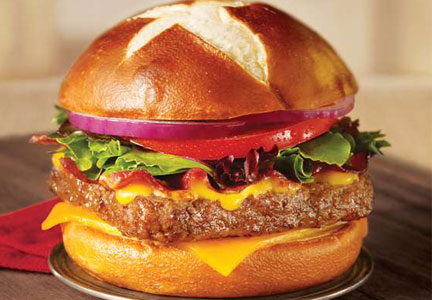 claim market share from the fast-casual segment, consumers are noting fewer distinctions between the two, said Technomic, Inc., a Chicago-based market research firm. In areas such as value, service and menu variety, lines across limited-service restaurant categories have begun to blur.
claim market share from the fast-casual segment, consumers are noting fewer distinctions between the two, said Technomic, Inc., a Chicago-based market research firm. In areas such as value, service and menu variety, lines across limited-service restaurant categories have begun to blur.Sixty-four per cent of consumers eat at fast-food restaurants at least weekly, with 39% going more often. Patronage of fast-casual concepts is less frequent; 40% of consumers dine at a fast-casual restaurant at least once a week, with 19% topping that number.
"Limited-service restaurants will need to compete for visitation by focusing on their convenience platforms, amenities and ambiance in addition to the quality of their ingredients," said Darren Tristano, executive vice-president of Technomic. "Fast-food concepts in particular can differentiate themselves and better compete with fast-casual concepts by adding loyalty programs, free Wi-Fi, or enhancing their ambiance."
Convenience is important to consumers, who report that call-ahead or on-line ordering may encourage more usage of limited-service restaurants. Thirty per cent of consumers would like to see delivery offered at fast-food restaurants, and 28% expect the option from fast-casuals.
Another key attribute is ambiance. More than half of fast-casual customers expect an upscale, relaxing atmosphere, and 17% say they will go elsewhere if that is not offered.
What’s on the menu? Healthier options are coveted by 23% of fast-food consumers and 27% of fast-casual users, who are slightly more willing than fast-food patrons to pay more for better-for-you menu items. The leading health claims at fast-food restaurants are gluten-free, indicated for 2.8% of menu items at top chains, and low-fat (1.3%). On fast-casual menus, 3% of items carry an organic claim, and 1.9% are indicated as natural.





